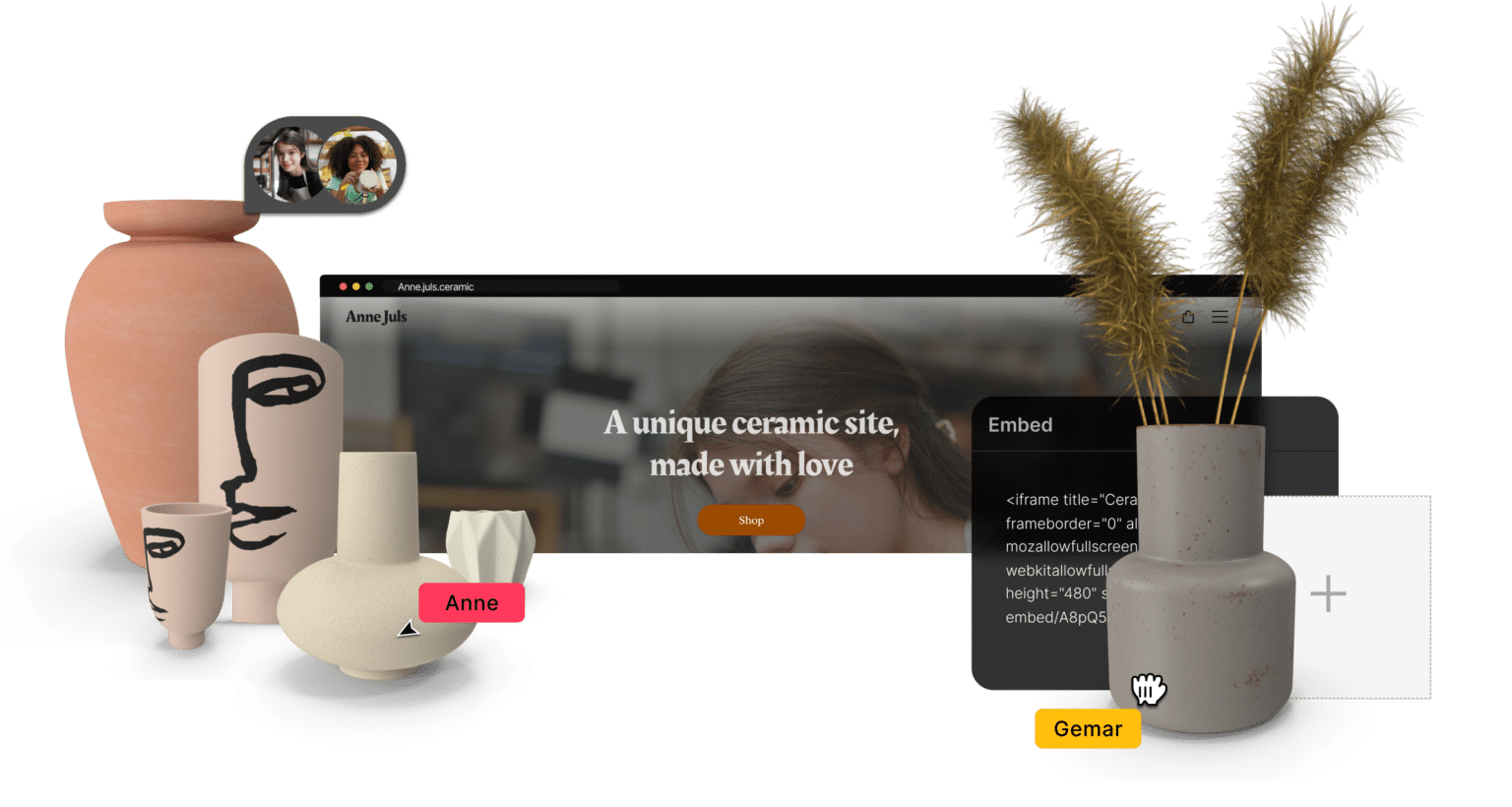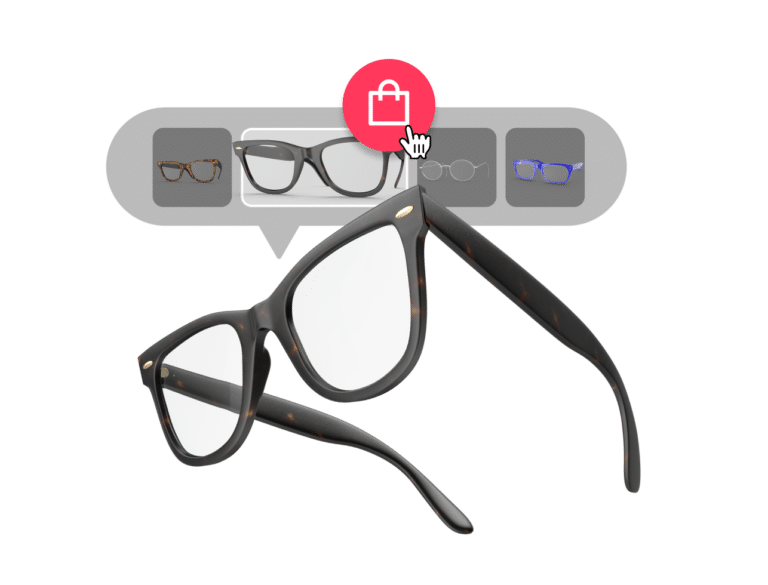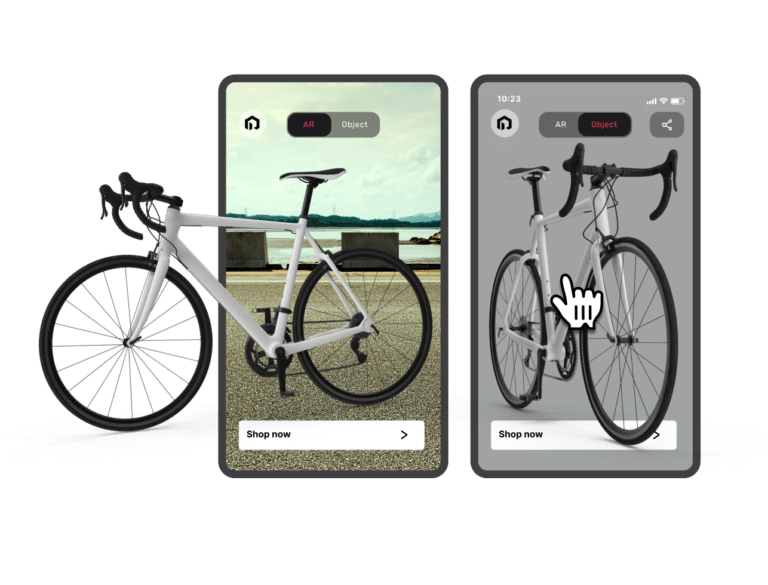Easy AR and 3D
for eCommerce

3D for eCommerce platforms. At scale

100% online.
No 3D skills needed
Drag and drop your 3D models and share them with one click.

Maximize performance and revenues
3D product views are proven to lift conversions by 250%.

Remove technological limitations
Anyone with a connected device can engage with your 3D and AR.

Unlock the power of 3D for brands and e-commerce with RealityMAX
Digital innovation in e-commerce should be about something other than high investments, training staff in advanced 3D techniques, and trading website loading speed for engaging 3D views. The 3D product visualization and AR solutions provided by RealityMAX are accessible, intuitive, and optimized for SEO. Stay caught up with competitors and bring your catalog to life in a wink.

Boost sales and engagement through 3D visuals

Enjoy cost-effective 3D content management
Your RealityMAX workspace is an all-in-one 3D project management solution. You can safely collaborate online in real time with 3D artists, designers, and marketers to nail the perfect product visualization. You can store all your 3D assets securely and keep everything tidy and under control with project folders. You can share a password-protected 3D or AR published scene with a simple link for review and approval. Everything from a single place.

Integrate 3D visualization with existing e-commerce platforms

Perfectly balance visual appeal and site speed
Our 3D product viewer is optimized for SEO and won’t affect your website’s loading time. On the contrary, adding 3D content to product pages on your e-commerce site can significantly improve your performance on search engines. Users tend to stay on a page much longer when they can interact with 3D views of products. And more time spent by visitors translates into more relevance and authority for your site and better rankings on SERPs.

Make people try products with augmented reality
When you share a 3D project with RealityMAX, you automatically get a link to a 3D and an AR experience. Augmented reality is a game changer when engaging customers and capturing purchase intent. When looking for a new sofa, lamp, or rug, seeing objects in your actual space makes a huge difference. As does the opportunity to virtually try a pair of sunglasses that caught your attention on Instagram. Especially when you can include a “Buy now” button.
RealityMAX for eCommerce: the future of shopping

Collaborative workspaces
Native real-time teamwork environemnts fully equipped with tools to transform and arrange elements. All changes made by a contributor are instantly visible to all team members.

Extended format support
All popular 3D file formats are accepted, including .glb, .gltf, .fbx, .3dm, .obj, .stl, .3ds. You can also upload 2D assets (.jpg, .png, .webp) and .zip archives with textures.

User management and permissions
Share your projects efficiently and securely, granting different privileges to different users who can view, comment, or edit scenes depending on their role in the process.

One-link share and 3D embed
Generate Web3D and augmented reality published scenes of your projects and share them with a link or a QR. Or integrate interactive mock-ups directly in a web page (like your online portfolio).
FAQs
How does RealityMAX enhance the online shopping experience?
Can graphic designers use RealityMAX to create content for social media and e-commerce?
What are the benefits of using RealityMAX for augmented reality in e-commerce?
How does RealityMAX integrate with web browsers and e-commerce platforms?
Is RealityMAX useful for showcasing products like digital cameras?
How can RealityMAX assist in digital marketing for e-commerce?
What is 3D technology for online stores?
How does 3D product visualization enhance the online shopping experience?
Why are major eCommerce platforms adopting 3D and AR technologies?
Is 3D technology the future of eCommerce?
Start collaborating
on 3D projects now
Power up reality to the MAX.